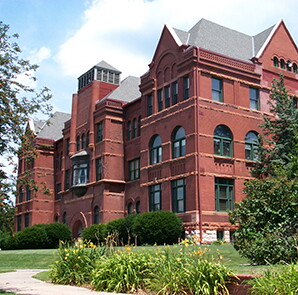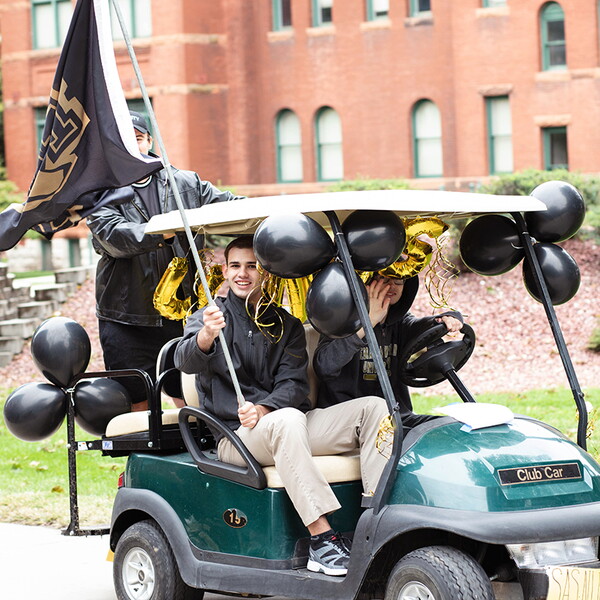Nebraska Wesleyan University students interested in Estonia learned about the northern European country firsthand during the fall semester.
Pille Põiklik, an English professor at the University of Tartu in Estonia, has spent the last several weeks at NWU teaching Estonian culture and language.
Nebraska Wesleyan University is a sister school with the University of Tartu. Since that relationship began in 2006, NWU students have studied in Estonia each semester and University of Tartu students have studied here. Last year, NWU history professor Meghan Winchell taught U.S. women’s and African American history at the University of Tartu as a Fulbright scholar.
This semester it was NWU’s turn to host a faculty exchange, made possible through the Harry Huge Foundation and the Archimedes Foundation.
“We’re taking a very cursory look at Estonian culture and history – a lot of history,” Põiklik said of her class. “The point is to introduce the whole concept of Estonia. I believe historical and cultural ideas will stick with students.”
Her class has read various Estonian literature and history as well as watched Estonian films.
While in the United States, Põiklik is also working on her doctorate and her dissertation on U.S. society and media.
Culture shock for Põiklik was minimal. Estonia, she said, is very focused on the western world particularly with information, news, and entertainment. For example, much of their TV programming comes from the U.S. with "CSI" being a favorite among Estonians.
“It’s such a small country, most things that affect Estonia are happening outside the borders,” she said.
Põiklik still had some adjustments to make upon arriving in the U.S., however. Põiklik said Estonians are stereotypically quiet, serious, and do not search for eye contact. The United States demeanor is more outgoing in comparison.
“It took a little while for me not to wear my usual Estonian expression,” she said.
While Põiklik sees University of Tartu and Nebraska Wesleyan students as quite similar, the universities themselves are very different. Wesleyan’s small size and centralized campus are in direct contrast to Tartu’s student body of 18,000 and sprawling campus embedded within the city.
Põiklik has appreciated the sense of community at Nebraska Wesleyan.
“It’s very student focused here,” she said. “There is both personal and professional contact. Wesleyan has a family approach.”
Põiklik has immersed herself in student life by living in Heim Hall. She has enjoyed the convenience of being in the middle of campus activities and has taken advantage of numerous university guest speakers, lectures, and theatre productions.
Põiklik has rounded out her experience in the U.S. with trips to Washington D.C., the Grand Canyon, and is planning a trip to New York City on her way back to Estonia.
“It’s been a very fun experience,” she said.













